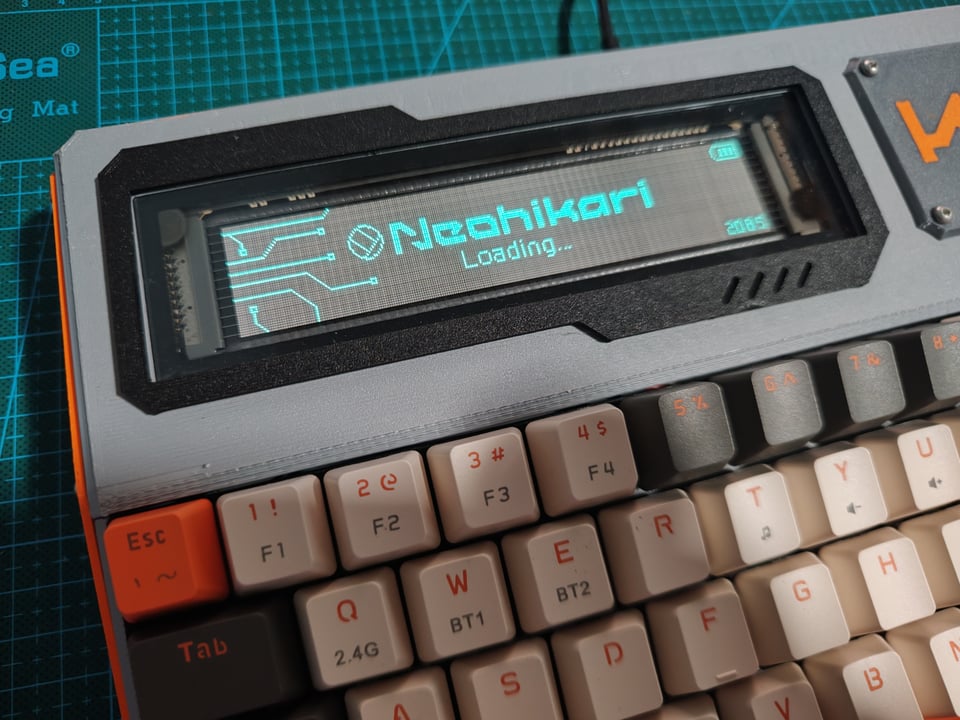Linkfest #10: The "marshmallow" shot, Reverse Tetris, and why high-fantasy heroes don't use gunpowder
Welcome back to the Linkfest! I had to take a break for a few months -- for my next book (on micromobility) I bicycled across the United States: 4,150 miles. I'm back in Brooklyn now.
So here we go with my next installation of what I call "the opposite of doomscrolling" -- the best thought-provoking material I can find online. Thank you for subscribing, and pass it on to anyone who you think might like it! They can subscribe here on a pay-what-you-want model.
Let's get to it ...
1) 🏗 Moving a building while everyone is inside working

In 1930, the Indiana Bell Telephone company faced a conundrum. They'd just bought up a smaller telco, and they wanted to demolish its building in Evansville so they could construct a new, bigger headquarters.
The problem was, the building they wanted to demolish contained 600 employees who were routing phone calls all day. If Indiana Bell tore the building down, it would interrupt telephone services for months.
So their architects came up with a completely wild work-around: They moved the existing building into a new location, while the workers were still inside, dutifully processing phone calls.
It took 34 days! But they pulled it off, with workers arriving every day while the building was slowly rotated. Call service was never interrupted.
The 7-story, 11,000-ton building was first lifted using hydraulic jacks. Then, the movement was carried out with hydraulic rollers on a concrete surface on 75-ton spruce beams, specifically located for this purpose. While the building rested on one roller, the workers positioned the next, and so on. In this way, the building was moved at a speed of 40 centimeters per hour. Even the entrance hall to the building was connected by a mobile entrance walkway that allowed rotational movement and kept it with access available at all times.
2) 🪡 An online archive of "tatreez" patterns

I am such a sucker for embroidery and stitchwork.
Being a child of the late-70s/early-80s world of videogames, I find chunky pixelation one of the most expressive visual forms on earth; as per Scott McLeod's "Understanding Comics", it hits a perfect midpoint between abstraction and realism. As I've grown up I've become increasingly fascinated by the the other great realm of "creating pictures and patterns with tiny pixels" -- stitchwork.
Fast Company has a great story about Tirazain, a new online archive of tatreez, a traditional Palestinian form of cross-stitch. Apparently a lot of historic patterns are in danger of being lost, so Zain Masri -- a marketing executive with Google and YouTube -- recently set up Tirazain to collect together patterns. As she notes ...
Like with many historical embroidery art forms, tatreez was traditionally practiced in rural areas and villages in Palestine by women who would use these patterns to decorate dresses, scarves, bedspreads, and pillows. The patterns and colors varied from region to region, and mothers would pass these down to their daughters.
“Women would traditionally embroider their thobes, which is like a long dress, and they would use the patterns to tell a story,” Masri says. “So traditionally, you would be able to tell what city or what town a woman was from."
At risk of nerding a little too hard on this stuff, when I look at these gorgeous patterns they look like spaceships from unreleased Japanese arcade-cabinet games from 1981 ...

Cross-stitch designs, like a lot of historic craftwork by women, have been (rather like video-games themselves) neglected by archivists and museums over the last few decades; it didn't seem as important and keep-able as quote-unquote "high" art. Thankfully that's changing, but online archives like these are awesome for making this gorgeous stuff globally visible.
3) 💻 Gorgeous cyberdeck

Robson Couto has made this truly gorgeous cyberdeck. I wanna make my own now!
In addition to the arm-mounted form -- straight outta Hackers -- what drew my eye, and thus my heart, is the vacuum fluorescent display. Take an up-close look at this beauty ...

Swoon.
4) ⚔️ Why high-fantasy doesn't use gunpowder

As the blogger "aldariontelcontar" notes, high fantasy -- from Tolkien to A Song of Fire and Ice -- rarely uses gunpowder. When warriors fight, they use close-combat weapons like swords, or ranged weapons like bows and arrows.
It's a little weird, right? After all, high fantasy is situated in a medieval-esque environment, and gunpowder weapons were certainly around in the real-world medieval period. But in Tolkien, the good guys never use cannons or gunpowder weapons; only the bad guys, with their "blasting fire", do. Why?
Because, as the author argues here, hand-to-hand combat is necessary to establish character. Gunpowder weaponry turns mass combat into a depersonalized affair ...
After gunpowder weapons developed, field artillery became the decisive arm of the army, and infantry-to-infantry combat happened primarily through volleys of (innaccurate) musket fire. Bayonet charge could still be decisive, but it happened far less frequently than the hand-to-hand combat of the previous eras.
This has the overall effect of depersonalizing the soldiers. Individual skill no longer matters (with few exceptions such as light infantry units) while numbers become decisive, and troops are unlikely to fight at close range. But the fantasy is an inherently heroic genre, and this depersonalization is in deep conflict with the fundamental nature of fantasy as a genre. With a bow, or even a crossbow, skill and personal investment requirements are significant; by contrast, musket drill could be learned in weeks. And unlike muskets, bows and crossbows never were a primary weapon. For medieval soldiers, main weapons were spears, axes, maces and warhammers. And this led to significant face-to-face combat.
As aldariontelcontar points out, Star Wars carried this tradition forwards, having the mystical good guys -- the Jedi -- fight with lightsabers.
5) 🎾 The "marshmallow" drop-shot returns to tennis

I'm not much of a sportsfan, but this piece in the New York Times fascinated me. (It's a free link, so you can read the story without being a subscriber!)
Basically, throughout the 90s and 00s, pro tennis became a fast and intense game, with the players simply smashing the ball at one another. Partly this was the result of improved training; also, innovations in tennis-racket technology helped push serves into lightspeed.
But then -- beginning in 2008 -- Roger Federer began occasionally using the "drop shot" (or "the marshmallow"), i.e. returning a serve with a deadened tap, so it just barely tips over the net. It's an age-old technique, but it had gone out of fashion in the age of blisteringly-fast volleys. Federer discovered that it could thus very much unsettle his opponents, who had grown unaccustomed to the drop shot: They'd be hunkered way back at the edge of the court, and suddenly they had to race forward before the ball double-bounced.
What particularly tickled me is how deliciously deceptive are the players who today deploy the drop shot. They'll wind up hard for their shot, making it look like they're going to destroy the ball ... then, at the very last second, switch:
The dropper is the equivalent of a changeup pitch in baseball. It’s about disguise and surprise. Its finest practitioners — think Alcaraz, Novak Djokovic and Ons Jabeur in the women’s game — usually wind up as if they are about to hit a pounding groundstroke or a volley aimed at the baseline. [snip]
Drop shots ask questions. “Hey, you, camping out there on the baseline, waiting for another two-handed backhand ripper. Did you expect me?”
“Can you change directions, churn out a sprint and catch me before I bounce twice?” [snip]
In every match, the No. 1-ranked Alcaraz will consistently wind up for a forehand, see his opponent bracing behind the baseline for a Mach 10 ball, and then, at the last nanosecond, slow his swing, cup the ball gently, and send it plopping across the net with the speed of a wayward butterfly.
6) 🧱 "Brutalist Italy"

Brutalist architecture fascinates me. It's probably because I went to the University of Toronto, which has some of the most hilariously ugly Brutalist buildings in Canada, toweringly grim tone-poems to mid-century concepts of what the "future" would look like. The buildings all look like bunkers you'd see in 1980s Doctor Who episodes with Tom Baker; when I approached Sidney Smith Hall for my class on early-English poetry, I half expected to see Daleks streaming out of the front door screaming EXTERMINATE EXTERMINATE.
I was thus intrigued to see a new coffee-table book arriving this fall about Italy's Brutalist architecture. Design Boom has a gallery of some of 'em, and whew, they are doozies. Book is buyable here.
7) 🌐 The Web is splitting in half

Lionel Dricot uses ad-blocking tech and disables Javascript when he's browsing the web. His goal is to avoid all tracking, and frankly to avoid the useless cruft of much "interactivity"; he prefers a stripped-down web experience. But this makes a lot of sites unusable -- they were designed to require Javascript for basic functionality. But he's willing to endure missing out on some stuff.
On the flip side, his own personal site is done in the low-fi fashion of many tech nerds today: Stripped-down, bare-bones HTML with no tracking and no SEO optimization. This means his site is less visible to online algorithms and search engines. But again, he thinks that's a perfectly fine tradeoff.
Something strange is happening: it’s not only a part of the web which is disappearing for me. As I’m blocking completely google analytics, every Facebook domain and any analytics I can, I’m also disappearing for them. I don’t see them and they don’t see me!
Think about it! That whole "MBA, designers and marketers web" is now optimised thanks to analytics describing people who don’t block analytics (and bots pretending to be those people). Each day, I feel more disconnected from that part of the web. [snip]
Despite breaking up with what seems to be "The Web", I’ve never received so many emails commenting my blog posts. I rarely had as many interesting online conversations as I have on Mastodon. I’ve tens of really insightful contents to read every day in my RSS feeds, on Gemini, on Hacker News, on Mastodon. And, incredibly, a lot of them are on very minimalists and usable blogs. The funny thing is that when non-tech users see my blog or those I’m reading, they spontaneously tell me how beautiful and usable they are. It’s a bit like all those layers of JavaScript and flashy css have been used against usability, against them. Against us. It’s a bit like real users never cared about "cool designs" and only wanted something simple.
It feels like everyone is now choosing its side. You can’t stay in the middle anymore. You are either dedicating all your CPU cycles to run JavaScript tracking you or walking away from the big monopolies. You are either being paid to build huge advertising billboards on top of yet another framework or you are handcrafting HTML.
8) ✅ A final, sudden-death round of reading material
The world's oldest continually-functioning cat door has been in operation since the 14th century. ✅ The molecular signatures of a broken heart. ✅ "The $2.98 Computer Library" ✅ Why you should download the things you love. ✅ When did people stop being drunk all the time? ✅ "Transfer up to 100 Petabytes per Snowmobile, a 45-foot-long ruggedized shipping container pulled by a semi-trailer truck." ✅ Coffee grounds make concrete 30% stronger. ✅ Precise calculations to answer "how far can you jump from a swing?" ✅ Building your office in an elevator. ✅ The end of cool small cars. ✅ DIY photogrammetry performed out the window of commercial flights. ✅ Ukraine is using Australian drones made out of cardboard. ✅ Bare-metal Space Invaders. ✅ Almost half of Americans watch TV with subtitles on. ✅ Cars are so big now they don't fit in parking spaces built decades ago. ✅ An exceptionally well-written layperson's guide to how vectors in data-analysis create meaning. ✅ Watch India's lunar rover take a spin on the moon's surface. ✅ Some taxi drivers in Southeast Asia are making more money as influencers than as drivers. ✅ Restoring a 1977 Mattel handheld football game. ✅ How the "harpejji" took off. ✅ They were making popcorn 2,000 years ago in Peru. ✅ 3D printed shoes. ✅ Building a modern camera body out of wood. ✅ Electric-assisted quad cycle that looks like a small racecar. ✅ Turning humid air into renewable power. ✅ Reverse Tetris.